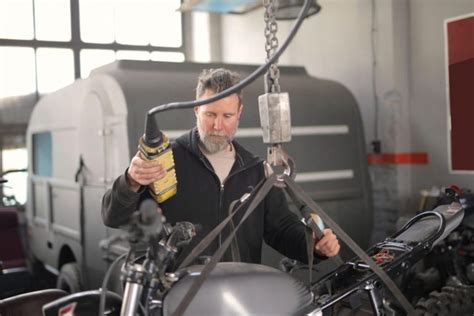How To Prime A Hydraulic Pump
Ronan Farrow
Mar 25, 2025 · 3 min read

Table of Contents
How to Prime a Hydraulic Pump: A Step-by-Step Guide
Priming a hydraulic pump is a crucial step in ensuring its proper function and longevity. A properly primed pump prevents damage from running dry, increases efficiency, and extends its operational lifespan. This guide will walk you through the process, covering different methods and troubleshooting common issues.
Understanding the Importance of Priming
Before diving into the how-to, let's understand why priming is so important. Hydraulic pumps rely on a continuous flow of hydraulic fluid to operate effectively. Without sufficient fluid, the pump can experience cavitation, a phenomenon where vapor bubbles form and collapse, causing significant damage to internal components. This can lead to:
- Reduced pump efficiency: Cavitation disrupts the smooth flow of fluid, reducing the pump's ability to deliver the required pressure and flow rate.
- Increased wear and tear: The collapsing bubbles create shockwaves that erode internal pump parts, leading to premature failure.
- Pump overheating: Lack of sufficient fluid leads to increased friction and heat generation, potentially damaging seals and other components.
Methods for Priming a Hydraulic Pump
The priming method depends on the specific type of pump and its associated system. However, here are some common techniques:
1. Gravity Priming
This is the simplest method, suitable for smaller systems. It involves raising the reservoir above the pump, allowing gravity to fill the pump and lines with hydraulic fluid.
- Steps: Ensure the reservoir is filled with the correct type and amount of hydraulic fluid. Open any valves that may be blocking fluid flow. Allow gravity to fill the system. This process may require several hours depending on system size and elevation difference.
2. Manual Priming using a Hand Pump or Bleeder Valve
Many hydraulic systems incorporate manual priming mechanisms. This often involves a hand pump or bleeder valve that allows you to manually introduce fluid into the system.
- Steps: Locate the hand pump or bleeder valve. Operate the pump or valve, observing the fluid flow. Continue until all air is removed from the system, and a steady flow of hydraulic fluid is visible.
3. Vacuum Priming
This method uses a vacuum pump to remove air from the system, enabling faster priming. This is particularly useful for larger or more complex systems.
- Steps: Attach a vacuum pump to the system's suction line. Operate the vacuum pump to create a vacuum, drawing fluid into the system. Monitor the vacuum level to ensure it doesn't exceed manufacturer specifications.
4. Pressure Priming
In some cases, pressure may be used to force fluid into the system, speeding up the process. This usually requires specialized equipment.
- Steps: Use a pressure source to increase the pressure in the reservoir, forcing fluid into the pump and its associated lines. This method requires careful attention to pressure limits.
Troubleshooting Common Priming Problems
If you're experiencing difficulty priming your hydraulic pump, consider the following troubleshooting steps:
- Check for leaks: Inspect all connections and hoses for leaks. Repair or replace any damaged components.
- Verify fluid level: Ensure the reservoir is adequately filled with the correct type of hydraulic fluid.
- Inspect suction line: Check for blockages or restrictions in the suction line.
- Examine valves: Make sure all valves are in the correct position to allow fluid flow.
- Consult the manual: Refer to the pump's instruction manual for specific priming procedures.
Conclusion
Successfully priming a hydraulic pump is crucial for efficient and safe operation. By following these guidelines and troubleshooting common problems, you can ensure the longevity and performance of your hydraulic system. Remember to always consult your pump's manufacturer's instructions for specific recommendations and safety precautions. Remember safety first, always wear appropriate safety gear when working with hydraulic systems.
Featured Posts
Also read the following articles
| Article Title | Date |
|---|---|
| How To Receive Blessings From The Lord | Mar 25, 2025 |
| How To Pose For Senior Pictures | Mar 25, 2025 |
| How To Keep Mice Out Of Camper During Winter | Mar 25, 2025 |
| How To Remove New Leather Smell | Mar 25, 2025 |
| How To Remove Tooth Crown At Home | Mar 25, 2025 |
Latest Posts
Thank you for visiting our website which covers about How To Prime A Hydraulic Pump . We hope the information provided has been useful to you. Feel free to contact us if you have any questions or need further assistance. See you next time and don't miss to bookmark.
